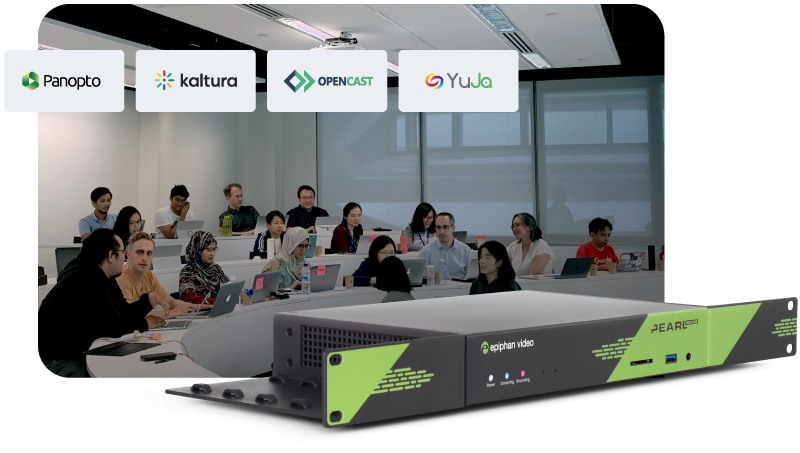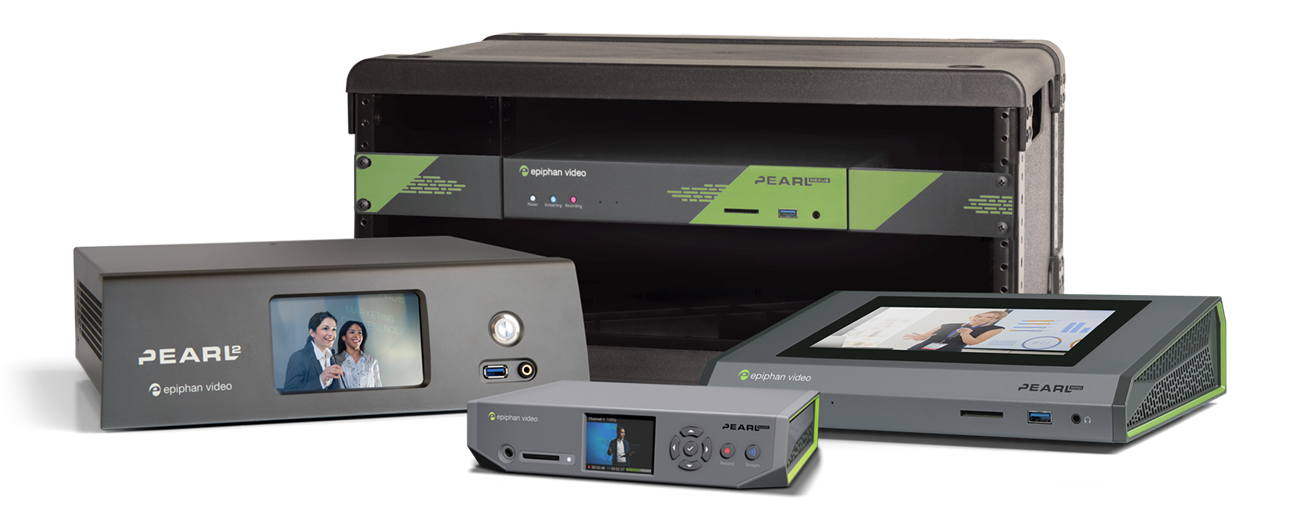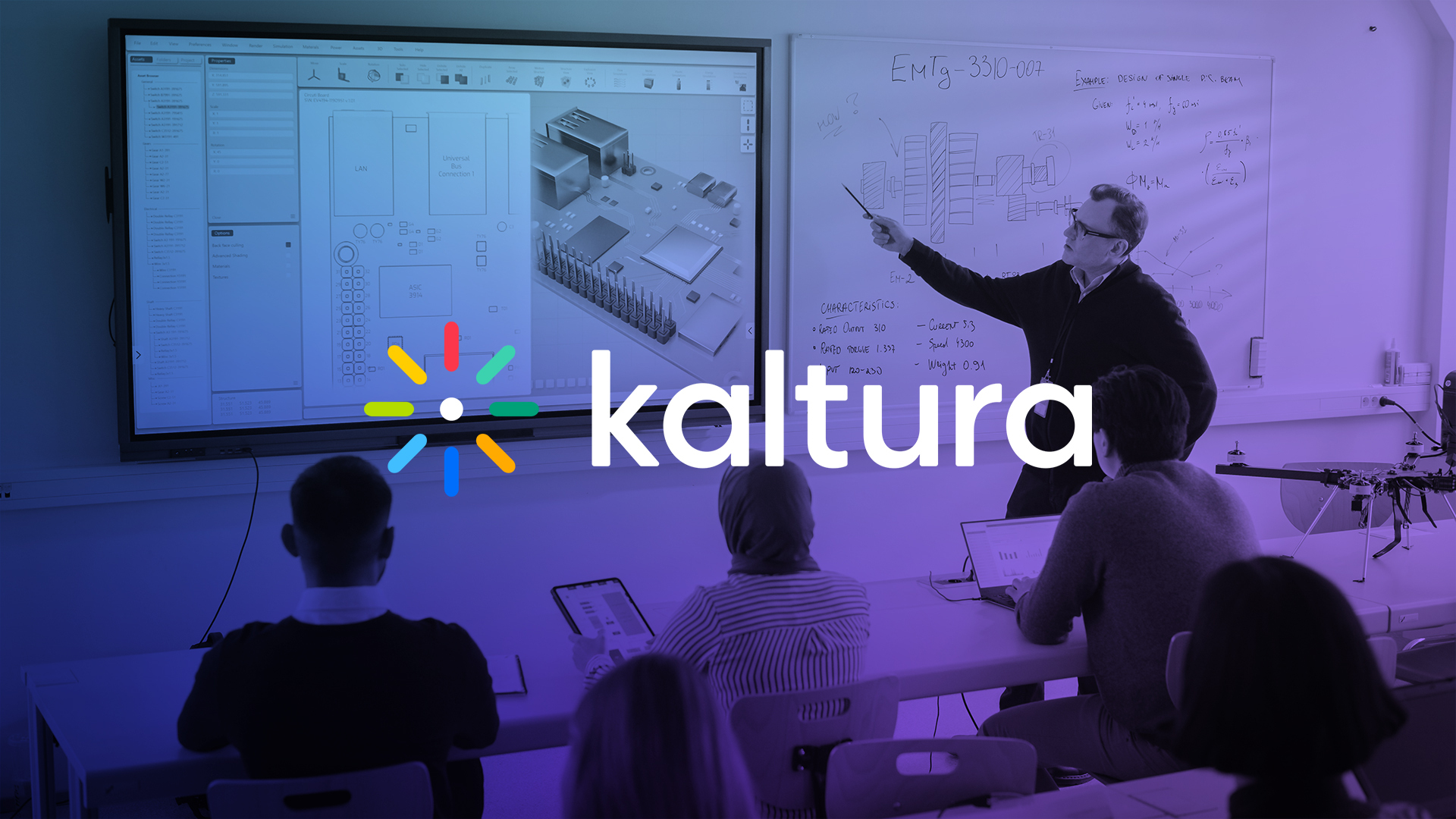Katlura, a leading video content management system (CMS), offers a wide range of intuitive, secure video creation and distribution solutions. The CMS is an asset for high-volume use cases, such as lecture capture in colleges and universities.
For the best results when using Kaltura lecture capture, it’s vital to use a dedicated hardware encoder. These specialized devices offer unmatched consistency, reliability, and ease of use compared to software alternatives, positively impacting student performance.
With so many Kaltura lecture capture devices available, comparing lecture capture devices is always a challenge. It’s important to consider several key features, such as how easy it will be for staff and faculty to use, how much work will be required to manage and maintain multiple devices, and how it interacts with existing technology on campus.

Simplify lecture capture with seamless video solutions
Discover easy-to-use, flexible, and reliable classroom capture. Pearl systems feature seamless integration with video management platforms like Kaltura, Panopto, YuJa, and Opencast.
Intuitive interface and design
Hardware encoders are a critical component of a successful Katlura lecture capture setup, but their effectiveness hinges on adoption. To assist with adoption, it’s worth choosing a device with an intuitive interface and design.
Features such as a large touch screen with straightforward controls to start and stop the lecture, or a built-in confidence monitor showing the professor how their lessons look, help facilitate adoption. A user-friendly device frees educators from worrying about new technology. On the other hand, a mysterious black box may intimidate professors with no knowledge of video production.
By considering end-users’ perspectives and how they may react to the device, they are more likely to adopt the Kaltura lecture capture appliance. Regardless of the underlying technical complexity of how the device sends and receives data to Kaltura, faculty-first features are a must-have when comparing lecture capture devices.
Comprehensive Kaltura integration
In addition to a user-friendly design, choosing a device with a comprehensive Kaltura integration is essential.
Thankfully, Kaltura has a large community of developers and partners, making it easy to find hardware encoders with seamless integration capabilities. Some key features to look for in a Kaltura-integrated lecture capture encoder include:
- Schedule synchronization and automation
- Ad hoc event support
- Customization options for content
Automation allows for automatic sync with calendar events, to push scheduled recordings or live streams to the appropriate accounts, folders, and groups. So whether you want to upload a week, a month, or an entire semester of events, the devices will know when to start and stop as well as send the content to the right place without any intervention from professors.
Ad hoc event support allows for quick and easy live or VOD capture without needing to edit the Kaltura calendar. Log in directly on the touch screen, hit the record button, and professors can record or stream content directly to their accounts.
Depending on the subject, students may benefit from a greater emphasis on slides or whiteboard content. Being able to combine video and audio sources in custom layouts through live switching or recording ISOs can enhance students’ learning experience.
No walled gardens
Along with a comprehensive Kaltura integration, it’s also important to consider compatibility with other technology and tools already in use on campus.
For instance, to maximize efficiency when recording lectures, it’s important to choose a Kaltura lecture capture device that integrates with automation solutions such as Crestron or Q-SYS. Professors already familiar with the control panels to activate cameras, microphones, and projectors can also start the hardware encoder connected with a single touch.
Additionally, if an institution is hosting a special guest speaker, sharing the stream or recording on public platforms like YouTube or Facebook would be advantageous. An encoder that can stream to multiple destinations, including Kaltura, can help facilitate a cross-platform audience.
Devices with an open ecosystem allow for a fully customizable experience. Having the flexibility to control how these devices are deployed in your unique circumstances enhances the experience for all stakeholders.
Centralized, remote device management
Kaltura lecture captures take place all over campus, from small classrooms to large lecture halls and labs, making it a challenge to monitor and manage. To ease the workload of managing multiple devices, centralized, remote management features are incredibly useful. Some key features to consider include:
Complete remote content control
You should be able to configure settings, start and stop streams and records, and verify video and audio feeds remotely. This allows you to monitor and make adjustments to ensure a high-quality end product, regardless of location.
24/7 device monitoring
Monitoring critical diagnostic information such as device status, temperature, storage available, system load, and more can help you ensure each Kaltura lecture capture appliance is functioning properly, preventing any negative impact on students who depend on the content.
Customized alerts
Setting up alerts to quickly identify and resolve any problems is crucial. You should be able to receive the information you need immediately, whether it’s a signal failure or system load issues. Ideally, the system should log any error, including those it self-resolves, so you can take measures to prevent future occurrences.
Access to all the information you need to ensure devices are performing optimally, no matter the time or place, is essential when dealing with multiple Kaltura lecture capture encoders tasked with delivering important educational content to students.
Versatile signal compatibility
The key to any successful video production is versatility, especially in lecture capture where equipment varies from room to room. Depending on the department or course, lecture capture may require PTZ cameras, USB document cameras, and lab imaging equipment. To ensure every aspect of the lecture is captured, it is essential to have every option to connect the relevant equipment.
This is not limited to video either. Lecture capture hardware that’s able to accept audio from XLR, RCA, USB, and embedded sources is equally critical. Rooms across campus may have different audio systems, with some having professional, fully-equipped mixing consoles while others only have a USB microphone. A lecture capture device that accommodates all audio sources ensures the recordings are giving the students the best chance to succeed.
In addition to physical audio and video inputs, AV over IP options can offer additional workflow flexibility. Network Device Interface (NDI) and Secure Reliable Transport (SRT) can eliminate the need for physical cabling by transmitting video and embedded audio over local and public networks, respectively. By supporting AV over IP solutions and various physical audio and video inputs, the ideal lecture capture device’s versatility means it can be used in by any department, in any room, regardless of size, experience level, or technology available.
Epiphan Pearl: The ideal Kaltura lecture capture appliance
The award-winning Epiphan Pearl family of production systems is renowned for their versatility and reliability. These devices are fully integrated with Kaltura, making them an excellent choice to support lecture capture.
Faculty members can effortlessly record and stream scheduled and ad hoc events with automatic file uploading. At the same time, staff can monitor the health of the devices from anywhere with Epiphan Cloud. This unique combination of ease of use and power has made Pearl systems one of the most trusted lecture capture solutions for educational institutions globally.

Stream like a pro
High-performance hardware for video capture, streaming, and recording. With seamless CMS support for Kaltura, Panopto, Opencast, and YuJa and easily integrates with Crestron AV systems.
